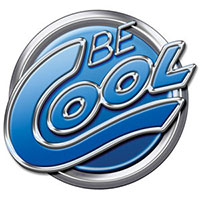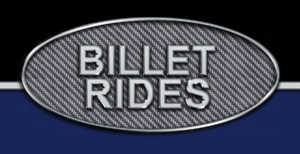A Beginner's Guide to Car Transmissions: What Transmission Do I Have?
- Jan 30, 2022


A Beginner's Guide to Car Transmissions: What Transmission Do I Have?
The transmission is a fundamental vehicle system. Simply put, if the transmission isn't working, then your car won't move. But how do you determine what transmission you have when it's time to repair or replace it? Our Car Transmission 101 Guide has everything you need to know about this critical part.
What is a Transmission in a Car?
The transmission - known to many auto mechanics and DIYers as the "gearbox" - is what converts the engine's rotational energy into forces that can move the car. This is done using the gear system inside the transmission, which contains several ratios to attain proper speed, torque and direction. Once the transmission has received and converted the engine output, it directs this power through the rest of the drivetrain until it reaches the wheels.
What are the Different Types of Transmissions?
There are four main transmission types you'll find in a road vehicle. Here's a brief overview of each.


Manual Transmission
This is the simplest and oldest type of transmission. Often called a "stick shift", it's connected to the engine via a friction clutch, which the driver disengages to manually shift the gear selector mechanism. Most modern manual transmissions have either five or six forward gears and one reverse gear. They're reliable, robust and the cheapest to repair, but there is a learning curve to use them.
Fully Automatic Transmission
This is the most common transmission on the road today. Automatic transmissions use a torque converter, planetary gear set and hydraulic clutches to transfer engine power. The vehicle computer controls shifting electronically. While they are more complex behind the scenes, automatic transmissions are much easier for the driver - you simply shift the gear selector into Drive (D), Park (P) or Neutral (N), and the computer takes it from there. The main drawbacks are that more parts can fail and they are more expensive to maintain and repair.


Continuously Variable Transmission (CVT)
These transmissions operate similar to an automatic but use a different mechanism. Instead of a gearbox, CVTs have a belt that runs over a series of pulleys, which produce an infinite number of gear ratios. The engine computer controls pulley adjustment to create the best ratio for each situation. CVTs produce quicker response, better fuel economy and lower repair costs. On the other hand, the stepless acceleration may feel soulless to a true driving enthusiast. (They're also not suitable for off-roading.)
Automated Manual Transmission
Also known as a Semi-Automatic or Clutchless Manual Transmission, these hybrid gearboxes combine the two designs. They have a similar mechanical layout to a manual transmission but do not require disengaging the clutch. Instead, a series of pneumatics, processors and actuators shift the gears, producing lightning-fast changes. Since these systems are complex and expensive, they're mainly found on race cars, high-end sports cars and heavy-duty commercial vehicles.
What Other Transmission Options are There?
From the baselines above, you can find many transmission models depending on the vehicle model and engine size. For example, the GM Turbo-Hydramatic automatic transmission developed in the mid-1960s includes models for light-duty, medium-duty and heavy-duty rear-wheel drive cars along with front-wheel drive configurations. Their manual transmissions come in designs for both longitudinal (parallel) and transverse (perpendicular) engine mountings.
All told, there are hundreds of car transmission styles. The 2019 Chevy Camaro alone had three offerings: the 6-speed manual MN6, 8-speed automatic MX6 and 10-speed automatic MX6. It's critical to know which Camaro transmission model you're shopping for to avoid problems.
What are the Signs of Transmission Problems?
Even the most rugged transmissions can eventually run into trouble. Here are some common warning signs of transmission failure:
- Rough shifting or refusal to shift.
- Delayed movement.
- Gears slipping out of place.
- A burning smell.
- The car feels underpowered compared to normal.
- Weird noises such as humming and clunking, especially in neutral.
- Transmission fluid leaks.
- Clutch fails to disengage (in manual transmissions).
- Grinding or shaking (in automatic transmissions).
What Transmission Do I Have?
If you need to repair or replace a transmission, it may take some detective work to find the model number. There are several ways to figure out what transmission is in your car.
- Check the Owner's Manual. The manual will often say which type of transmission is installed, or at least give the options for that vehicle model. You can also find other important info such as what transmission fluid/filter are used and how often to change them.
- Look at the White Card on the Driver's Door. When you open the driver's door, there should be a white tag on the side with small black lettering. The transmission model number is usually located on this card along with the vehicle year, engine type and country of origin.


- Go Under the Hood. Get a flashlight and look in the engine bay. The transmission and/or transmission pan sometimes have part numbers stamped on them. For some automakers, you can also identify the transmission based on the oil pan shape.
- VIN Number. If all else fails, write down the 17-character vehicle ID number. This is on a metal plaque located on the driver's side at the edge of the dashboard - you can see it by looking through the windshield from outside the car. Decode the number using an online database or by calling a dealership.
Camaro owners can find hundreds of transmission parts at Rick's Camaro. Whether you need a Camaro manual transmission or automatic gearbox - or other parts such as clutches and flywheels - we have them in stock. Use the "Add My Vehicle" tool or call our experts for assistance.















































